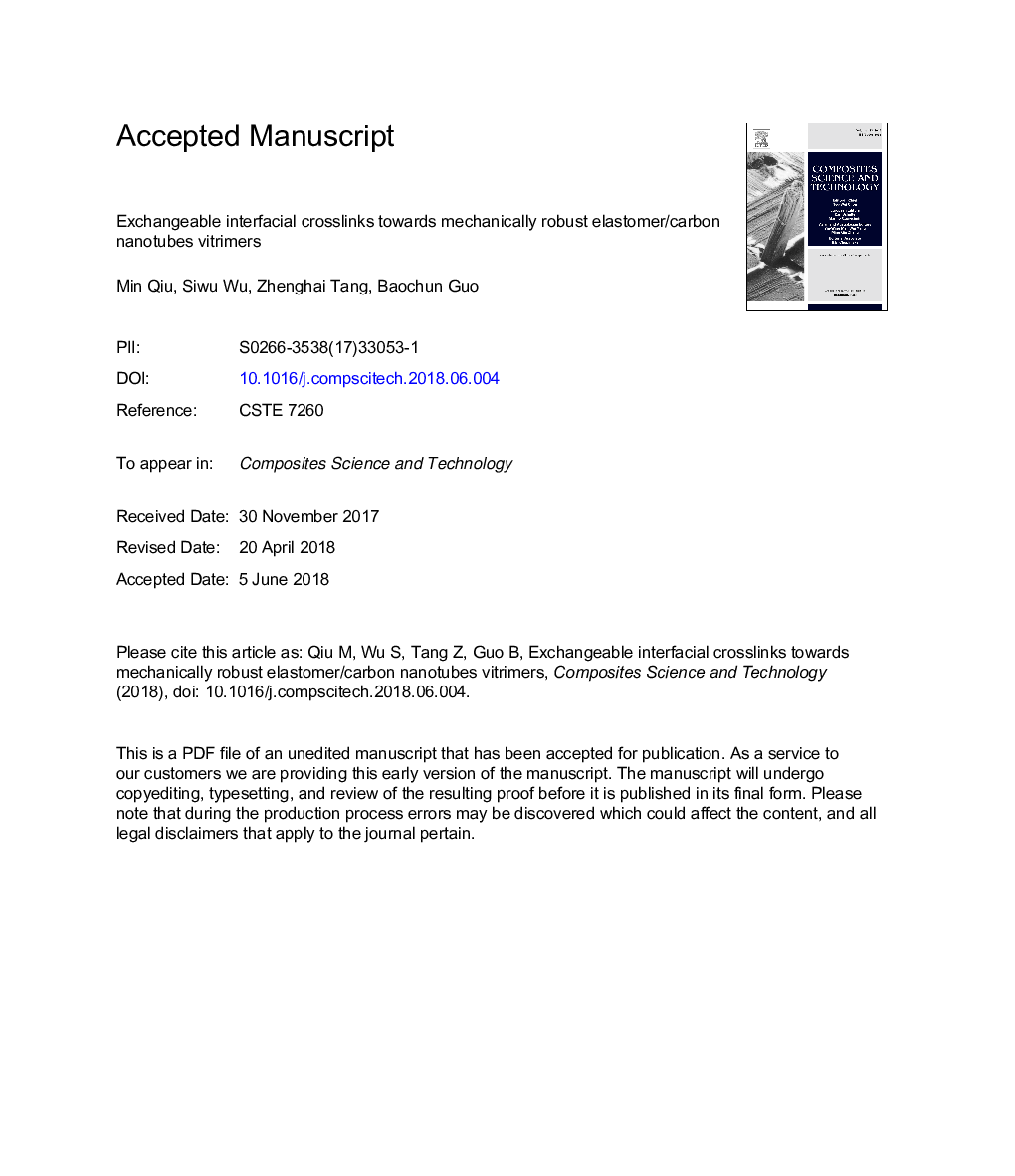| Article ID | Journal | Published Year | Pages | File Type |
|---|---|---|---|---|
| 7214031 | Composites Science and Technology | 2018 | 27 Pages |
Abstract
Covalent bonds mediated interfaces are generally favorable for transferring interfacial stress and hence rationalizing the mechanical properties of the filled elastomeric composites. Aiming at reprocessable yet robust elastomeric composites, in this contribution, exchangeable interfacial crosslinks are introduced into the interfaces between epoxidized natural rubber (ENR) and multi-walled carbon nanotubes (MWCNTs). This is accomplished by functionalizing MWCNTs with carboxyl groups through diazo-coupling reaction and then incorporating the modified MWCNTs into diacid-cured ENR. Accordingly, covalent β-hydroxy ester bonds result in the interfaces between ENR and MWCNTs. The formation of covalent interfaces enables much uniform dispersion of MWCNTs and stronger interfacial adhesion. Comparing to the ENR filled with pristine MWCNTs, the modified composites exhibit much improved mechanical performance. Importantly, the exchangeable nature of interfacial β-hydroxy ester bonds has promoted effect on the reprocessibility of epoxy-MWCNTs vitrimers. Overall, we envision this interfacial strategy can provide an alternative avenue towards reprocessable yet robust elastomeric composites.
Keywords
Related Topics
Physical Sciences and Engineering
Engineering
Engineering (General)
Authors
Min Qiu, Siwu Wu, Zhenghai Tang, Baochun Guo,
